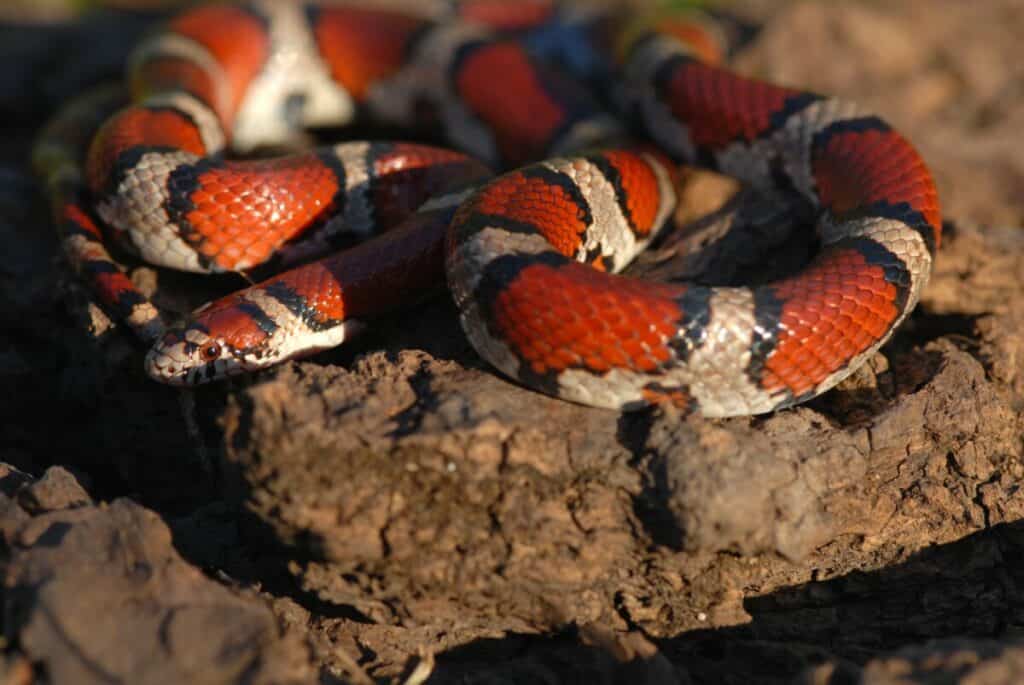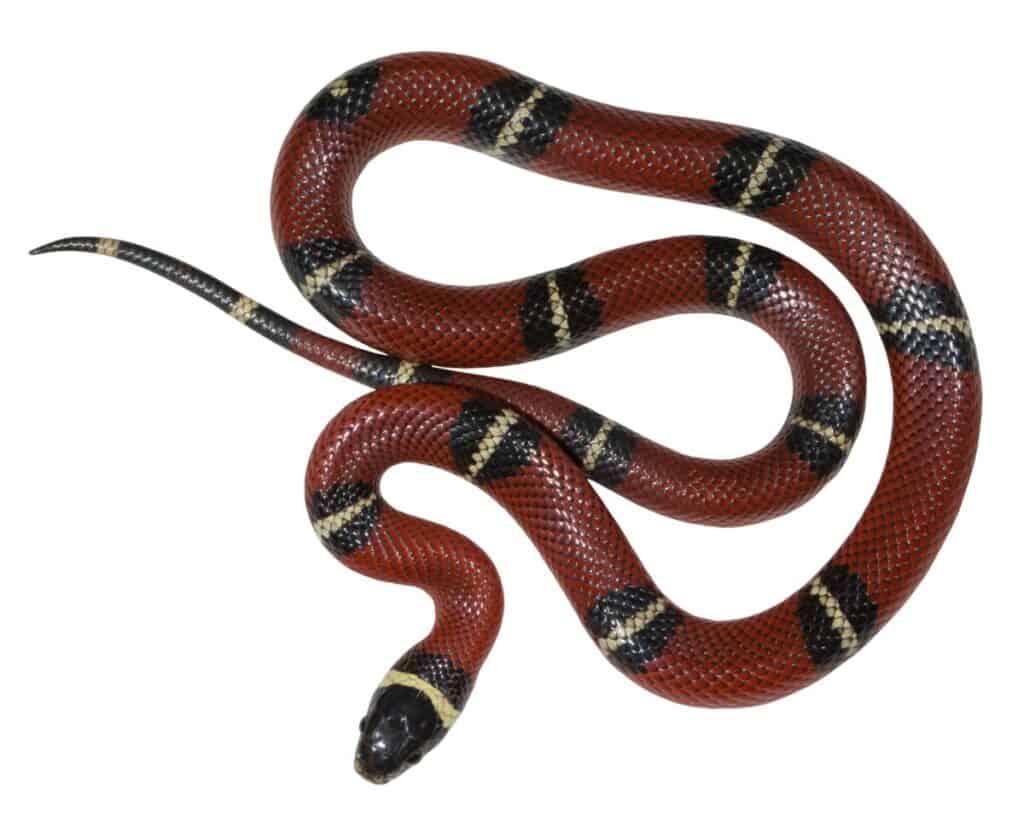
Each species of snake has its characteristics which makes it hard to know which snakes are venomous or not. A specific species of snake that many wonder whether it is venomous is the milk snake. So, are milk snakes venomous?
Milk snakes are not venomous or poisonous. Milk snakes are one of the most commonly killed snakes as a result of their vibrant colors. It is because of their resemblance to coral snakes that many assume they are venomous, but that is not the case.
The milk snake is a beautiful creature and should be appreciated. There is a lot of information that can be beneficial to learn about the milk snake. After doing research, a compilation of information on the milk snake has been provided below.
What is the Milk Snake?
This red and black striping on a yellow or white snake is native to North America. It is because of the bright red of these snakes that many assume they are venomous. The milk snake is a nonvenomous snake despite the fact that it looks a lot like a coral snake.
The name “milk snake” comes from the idea that these snakes milked cows. This has since been proven to be false, but the name has stuck which is why they are still called milk snakes today.
The milk snake is a common reptile kept as a household pet. This species of snake is easy for beginner snake owners as well as experienced snake owners. Milk snakes make great pets because they are friendly with humans unless they fill threatened. In fact, you can check out my complete Nelson’s Milk Snake Care Guide here!
If a household decides to add a milk snake to their family, it is important to house each milk snake in its own enclosure. Milk snakes can be cannibalistic in some instances which is why it is important to keep them separate.
Difference between Milk Snakes and The Venomous Coral Snake
Milk snakes and coral snakes look very similar to one another. Milk snakes are known for their peaceful behavior. They do not prey on humans and have no venom.
Coral snakes on the other hand are the second most venomous snake in the world. To be fair to coral snakes they are not the second most dangerous snake in the world.
Coral snakes have very small fixed fangs that are hard to latch onto things. Therefore they need to be in just the right angle and position to be able to get a bite out of a creature. This makes it harder for them to inject venom into a being.
Still, you do not want to mess around with a coral snake. They are still very dangerous snakes. Yet, how do you know if it is a coral snake or a milk snake since they look so similar? Of course, there are actually many different colorations of the milk snake but we will focus on the ones that look like coral snakes.
There is one distinctive difference between a coral snake and a milk snake. It is a small coloring difference. Both snakes’ primary color is red, but the milk snake has red bands bordered by black and the coral snake has red bands bordered by yellow.
There is a little rhyme that people use to remember this fact. It goes: red to yellow, kill a fellow; red to black, friend of Jack. Or some say red to yellow, kill a fellow, red to black, venom they lack. If you can remember these rhymes then you will be able to know if you are in danger from your silvery friend or not
How the Milk Snake Attacks its Prey
Milk snakes are carnivores like every other snake. Just because they are carnivores does not mean that you are in danger of being attacked by a milk snake. Remember milk snakes are non-venomous and want to stay clear of humans.
Humans are not a part of the milk snake diet. We are far too large for the milk snake to even think about eating.
Milk snakes do, however, eat mice, rats, voles, and other small rodents that can be found in the territory it lives in. They also have been known for eating lizards, snake eggs, and other snakes. Milk snakes have been caught eating their dangerous look-alike brother the coral snake before.
How does the milk snake kill its prey since it has no venom? Milk snakes are very resourceful. They use their body to wrap around their prey. They then squeeze their prey until their heart stops, because of a lack of blood flow. Once their heart has stopped the milk snake swallows their prey whole.
The way a milk snake kills its prey is another testament to how safe we are from the milk snake. Milk snakes are relatively small snakes. The average size of the milk snake in the United States of America is three feet.
Behaviors of Milk Snakes
Milk snakes are about as harmless as a snake can get. They do not have fangs and while they do have teeth they are very very small teeth. It is said that if you get bitten by a milk snake it would hurt no more than brushing up against a rose bush.
That does not mean a milk snake cannot look scary. The milk snake is aware of the fact that it is very harmless and so to scare its predators they try to make themselves look like much more dangerous snakes.
If a milk snake is approached and feels threatened it will start vibrating its tail. This will make a buzzing sound that mimics the sound of the rattlesnake.
If you do not respect their request for space they will leap at you and bite you. Still, though, as mentioned previously, it will not hurt. Therefore, there is more to fear in the milk snake’s bark than in their bite.
The milk snake is the best snake to have around to get rid of rodents. Therefore, if you see a milk snake leave it be. It will not hurt you and only bring help to your home.
Where to Find Milk Snakes

Milk snakes can be seen in lots of different environments. If you want to see one, because of its beautiful colors and gentle nature you can look for milk snakes in barns, forest edges, grassy areas, and streams.
If you see a milk snake in these areas you are safe, so there is no reason to worry. Still, do not go and pick up the snake. While these snakes are nonvenomous, they will defend themselves if they feel threatened. A stranger just picking up one is likely to cause the milk snake to feel threatened.
Being able to observe and identify a snake while in nature is something that can be fun and exciting.
